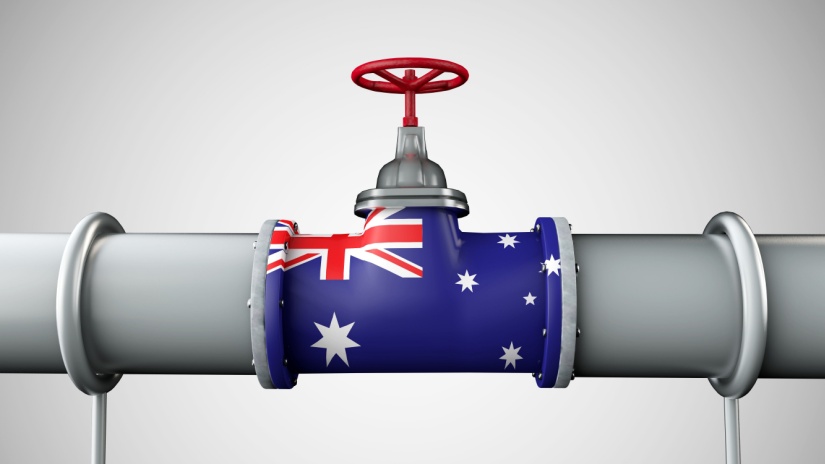Knowledge Centre
The east coast gas squeeze

Australia’s east coast - particularly New South Wales, Queensland, and Victoria - is facing tightening gas supply. Several domestic gas‑fields are maturing, exploration investment has lagged, and export demand continues to put pressure on supply.
Consumers and industries are watching with concern as gas prices rise, tight supply impacts reliability, and political debates intensify around how much gas should be reserved for local use.
Key issues include:
- Falling production from ageing gas fields.
- Rising costs of extracting gas, regulatory and environmental constraints.
- Export infrastructure directing large volumes of gas overseas, limiting domestic availability.
- The balance between gas as a “bridge fuel” while pushing for decarbonisation via renewables and hydrogen.
Market dynamics reshaping the squeeze
Several forces are interacting to tighten supply and influence pricing:
- Export demand. LNG export terminals have strong international demand, often getting better prices, which reduces incentive for producers to allocate enough gas domestically.
- Regulatory environment. Governments are under pressure to impose domestic reservation policies - requiring producers to supply a certain share for the local market. There are trade‑offs around how these rules are structured, how binding they are, and potential effects on investment.
- Investment & exploration. Investment in new gas fields and infrastructure has slowed, due to concerns around climate policy, community opposition, cost, and long lead times. This risks creating supply shortfalls in the medium term.
- Transition pressures. With policies pushing decarbonisation, investors are weighing regulatory risk. If gas becomes less attractive long term, that may deter investment just when new supply is needed.
The Narrabri project and political responses
The Narrabri gas project in New South Wales has become a flashpoint in discussions around how much domestic gas should be prioritised. Key points:
- Narrabri is proposed as a major source of new domestic gas supply. If it proceeds, it could help relieve some of the short‑term pressure.
- Critics argue that approvals, environmental assessments, and consultation have been slow, delaying potential benefits.
- Proponents argue that the project is essential for reliability, especially as coal plants retire and renewables need firming.
- Political debate remains heated: balancing environmental concerns, indigenous rights, land access, against energy security and price affordability.
Is the government moving fast enough?
Assessing government action across federal and state levels reveals mixed progress:
- Some states are accelerating approvals for gas projects, tightening environmental and safety regulation, and considering reservation policies to ensure domestic supply.
- Federal government has signalled support for gas as part of the energy security toolkit but also faces competing pressure to lean heavily into renewables and emissions reduction.
- However, many argue that delays in approvals, inconsistent policies between jurisdictions, and lack of clarity on domestic reservation rules mean action isn’t happening as fast as needed.
Risks if supply doesn’t keep up
If gas supply fails to meet demand or transitions are not managed well, several risks loom:
- Higher prices for households and business.
- Increased reliance on gas imports or more volatile spot markets.
- Potential shortfalls in supply during periods of heat or interruptions in electricity, since gas often serves as backup or firming.
- Slower transition for industries that rely on gas, especially if alternatives are not yet viable or available.
What more should be done
To address the gas squeeze and ensure security, governments and industry could:
- Fast‑track projects like Narrabri, while ensuring environmental and community concerns are addressed properly but efficiently.
- Establish and enforce domestic gas reservation mechanisms to ensure supply for local markets.
- Encourage new exploration and investment in gas production, balanced with emissions and environmental oversight.
- Improve infrastructure - pipelines, storage - to move gas effectively across east coast markets.
- Develop and invest in cleaner gas technologies (e.g. hydrogen blending, biogas) where feasible to reduce emissions while maintaining reliability.
- Clarify regulatory frameworks and produce consistent policies across states to reduce risk for investors and speed up deployment.
The east coast gas squeeze is real.
Rising demand, export pressure, constrained supply, and tighter regulation all combine to create a challenging environment. While government action is underway, many experts believe it is not yet moving with sufficient speed or coherence to avoid price shocks or supply shortfalls - especially as the energy system transitions and coal plants retire.
Consumers and businesses need clarity, affordability, and reliable gas supply in the coming years. For many, their energy plan’s gas component will play an increasingly important role.
Got questions about your gas plan? Call Compare Energy on 1300 790 106 to discuss options tailored to your needs. Our team can help you understand current rates and find a plan that balances cost, reliability, and emissions.

